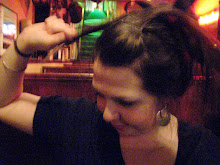
As you can see from the above map of the medina at Fes, they are not exactly laid out in a straight-forward, NYC gridlike style. Which, some might argue, is the point and the fun of walking through them. A seemingly straight street will fork and branch off in a million directions, the buildings all looming creakily at least two stories high all around youm making orienting yourself to a distant landmark impossible. I should know. I suffer, now, from medina-phobia.

It starts out fun enough. You wander down a long, organized boulevard or avenue in the ville nouvelle until you come upon the walls of the medina, usually 20 feet or more high. The great entrance gates are flowing in both directions with people, scooters, and donkey carts. So you hop in and get swept up in what can only be described as the current of people and vehicles. Its impossible to go at your own pace, as you are now at the mercy of the masses, and the only way to escape the push-and-pull is to stop in whichever shop or stall is immediately next to you on the cramped, cobbly street. Of course, the shop owners know this, and they immediately beckon you to look, "for free, just for the pleasure of your eyes". Once you've caught your breath and said your nicest "non, merci" repeatedly, you get swept up again.

It has been pretty impossible for us to do sight-seeing in the real sense of picking a place you want to visit and then finding your way there. Inevitably, we get lost. We stumble upon weird sights, quiet residential streets, plenty of tour guides and hustlers, food stalls, leather workers, shoe stores, trinket shops, as well as tons of places and areas dedicated to the everyday needs of the average Joe Morocco. In Fes, for instance, we spent almost three hours wandering, baffled by our Lonely Planet map and the lack of street signage in the medina. After circling past places we swore we had already passed, but also stumbling upon the main historic attractions, Lucy's directional sixth sense led us through a few empty streets and back to where we started at the main gates. We saw the touristy, the under-construction, the historic, and the everyday parts of the biggest medina in Morocco, and by the end we both agreed that it was exhilirating, and that we were tired.
Now that we're in Marrakech, I am determined to stick fairly close to the similarly gigantic but decidedly un-mazelike Djemma el-Fna, the giant UNESCO World Heritage square where, nightly, almost 100 restaurants set up outdoors and cook their specialties for tourists and locals. Right now, I think its safe to say we are both thinking about our next bowl of haricots (stewed beans) topped off with a salty, spicey, pickled sauce and a small loaf of khoobz bread. All for $0.75 each!








